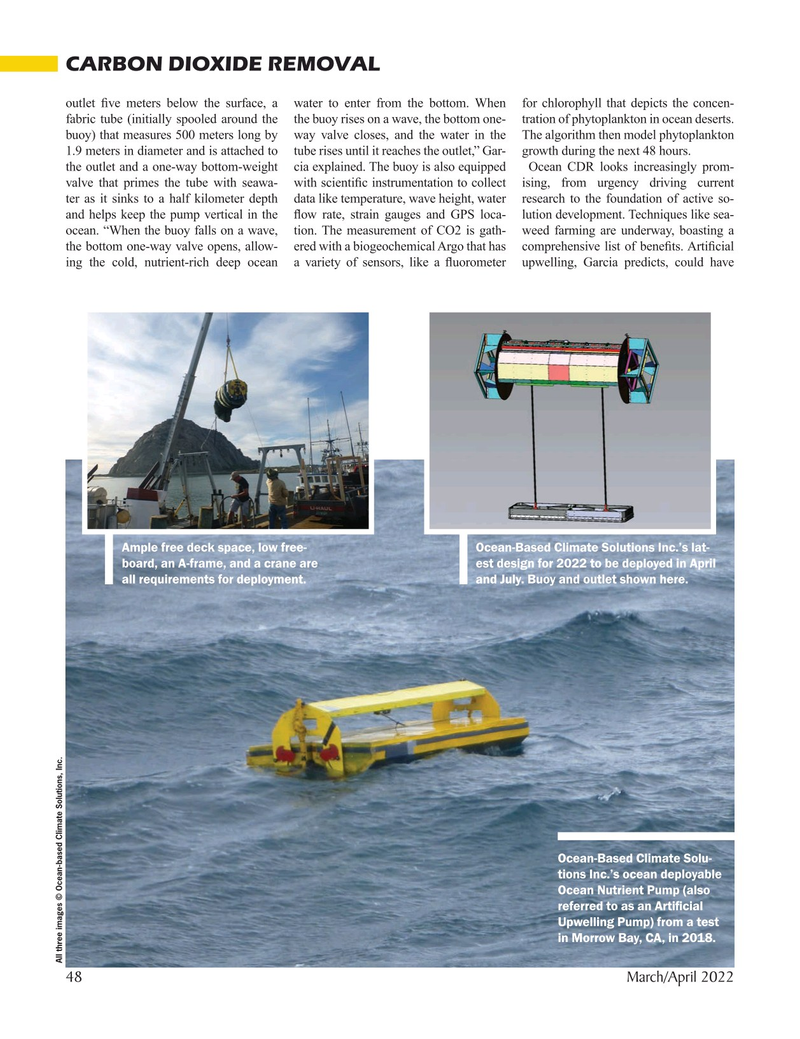
Page 48: of Marine Technology Magazine (March 2022)
Read this page in Pdf, Flash or Html5 edition of March 2022 Marine Technology Magazine
CARBON DIOXIDE REMOVAL outlet ? ve meters below the surface, a water to enter from the bottom. When for chlorophyll that depicts the concen- fabric tube (initially spooled around the the buoy rises on a wave, the bottom one- tration of phytoplankton in ocean deserts. buoy) that measures 500 meters long by way valve closes, and the water in the The algorithm then model phytoplankton 1.9 meters in diameter and is attached to tube rises until it reaches the outlet,” Gar- growth during the next 48 hours.
the outlet and a one-way bottom-weight cia explained. The buoy is also equipped Ocean CDR looks increasingly prom- valve that primes the tube with seawa- with scienti? c instrumentation to collect ising, from urgency driving current ter as it sinks to a half kilometer depth data like temperature, wave height, water research to the foundation of active so- and helps keep the pump vertical in the ? ow rate, strain gauges and GPS loca- lution development. Techniques like sea- ocean. “When the buoy falls on a wave, tion. The measurement of CO2 is gath- weed farming are underway, boasting a the bottom one-way valve opens, allow- ered with a biogeochemical Argo that has comprehensive list of bene? ts. Arti? cial ing the cold, nutrient-rich deep ocean a variety of sensors, like a ? uorometer upwelling, Garcia predicts, could have
Ample free deck space, low free- Ocean-Based Climate Solutions Inc.’s lat- board, an A-frame, and a crane are est design for 2022 to be deployed in April all requirements for deployment. and July. Buoy and outlet shown here.
Ocean-Based Climate Solu- tions Inc.’s ocean deployable
Ocean Nutrient Pump (also referred to as an Arti? cial
Upwelling Pump) from a test in Morrow Bay, CA, in 2018.
All three images © Ocean-based Climate Solutions, Inc.
48 March/April 2022
MTR #3 (34-49).indd 48 2/25/2022 10:16:53 AM

 47
47

 49
49
